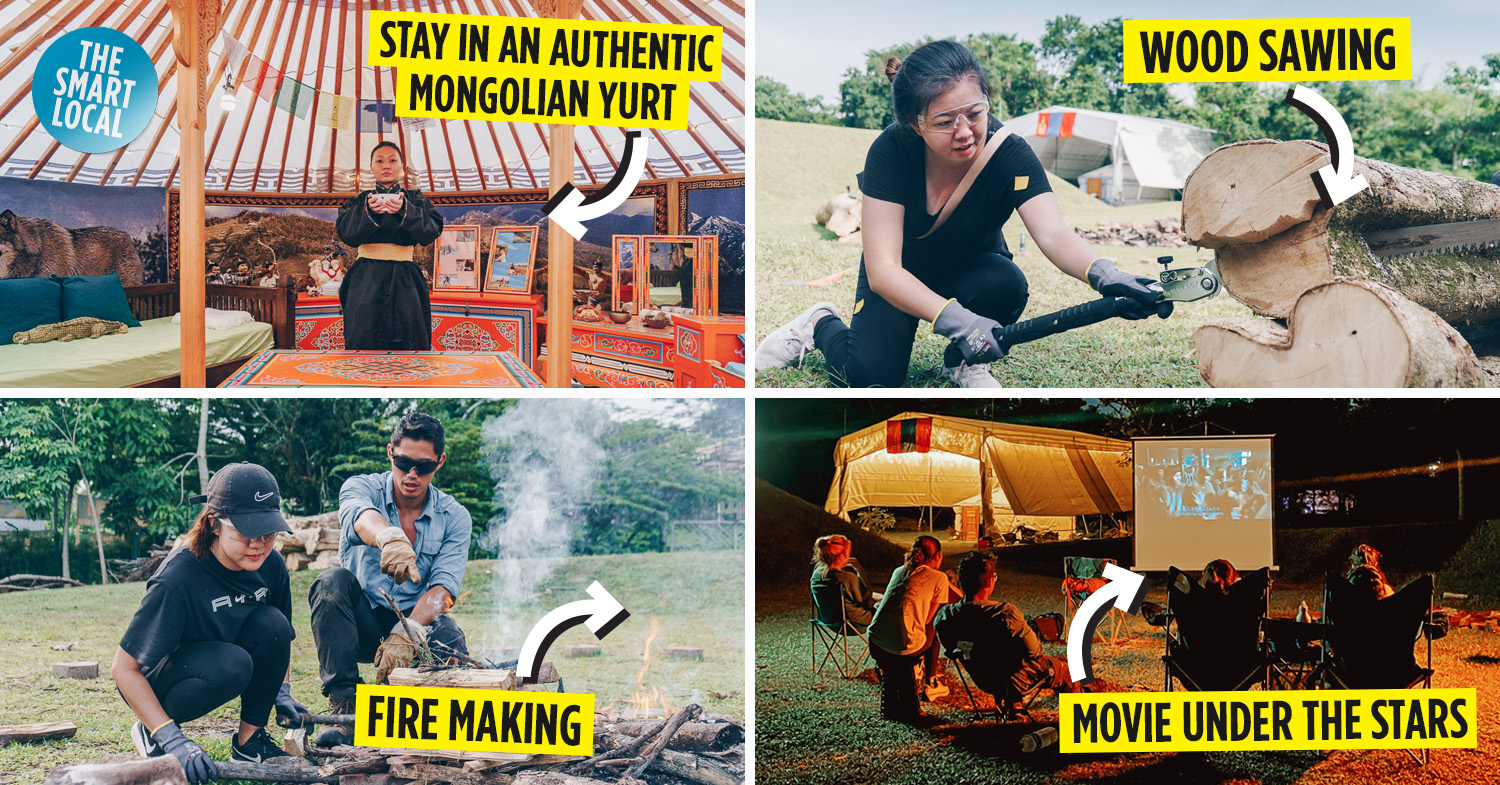Mongolian Yurt getaway
Mongolia – the land of nomadic tribes, camels, the vast Gobi desert and a place none of us would think we could visit amid the pandemic.
Luckily for those of us who want to visit Mongolia without having to wait for VTLs and foot exorbitant travel costs, we can now experience a piece of the country on our sunny shores in the form of a 2D1N yurt staycay.
1. Getting acquainted with hosts and accommodation
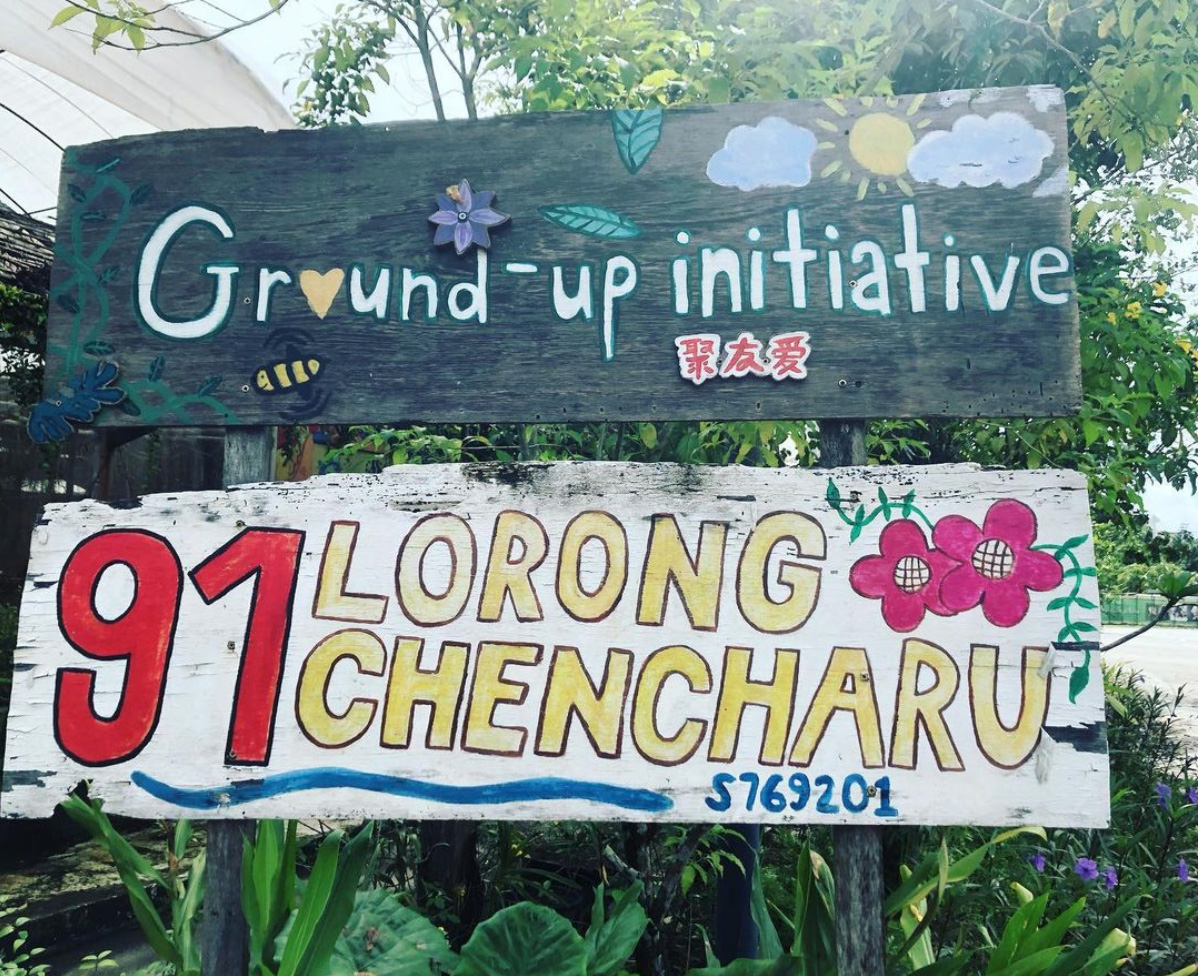
If you see this signboard, this isn’t the entrance you’d want to take. Go past this sign and the Mongolian yurt site would be on your right
Image credit: @susan.mcginney
ORTO is best known for its 80-cent boat noodles and prawning, but go further into its compounds and you’ll find Ground-Up Initiative (GUI) where the campsite is located. The yurt can be found towards one end of a field, sheltered under white tentage that shields it from sun and rain.
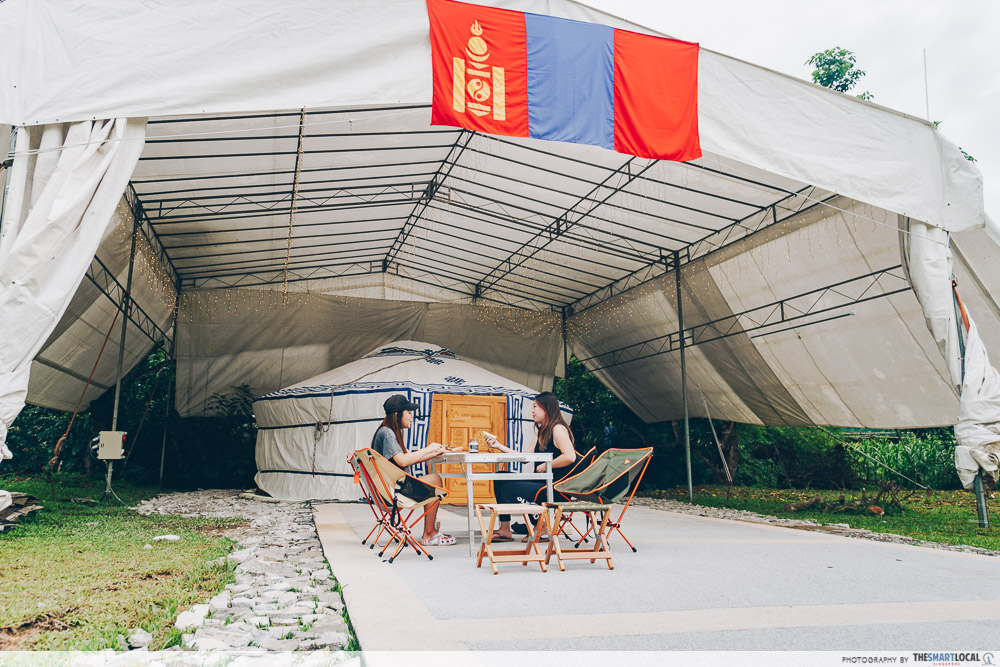
Our accommodation for the night
We met our guide Scott Tay, founder of Beyond Expeditions (BE), a travel company specialising in curated adventure tours to less touristy locations like Mongolia, Kazakhstan and Ladakh, India.
Since travelling is close to impossible during the pandemic, BE now conducts expedition tours, bushcraft workshops and its latest offering – a Mongolian Yurt stay.
A seasoned traveller to Mongolia who considers it his second home, Scott is well-acquainted with the country having visited more than 20 times. By a stroke of luck, Scott was able to get his hands on an authentic Mongolian yurt from the Embassy of Mongolia although it wasn’t in pristine condition.
He embarked on a months-long project to restore the yurt to its former glory. Then, he set it up at GUI as an opportunity to share a piece of Mongolia with Singaporeans who can’t travel to the country right now.
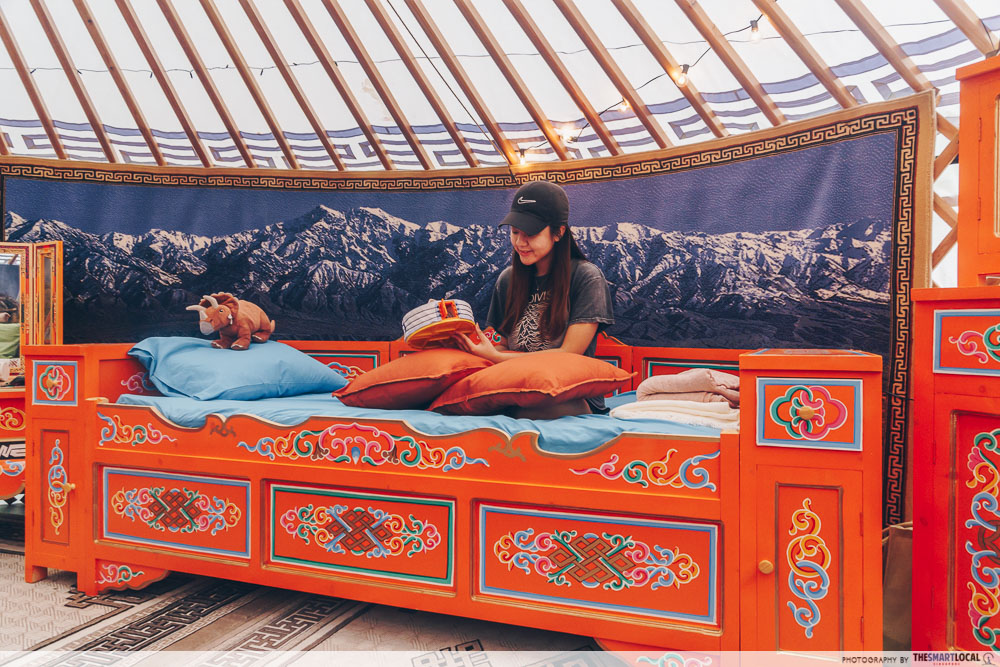
A traditional Mongolian bed commonly found in yurts
The work that Scott did in restoring the yurt is palpable. From what we understood during our short icebreaker session with him, the yurt and some of the furniture in it were quite badly damaged from being stored in a container for about a year.
Inside the yurt, we saw hand woven rugs reflecting scenes you’d find in Mongolia. Tufted images of the vast Gobi mountains, locals participating in a traditional Mongolian wrestling competition, and wolves decorated the walls of the yurt.
The yurt also came furnished with authentic Mongolian fittings, like this set of hand-painted brightly coloured cabinets, bed and stools.
For a traditional yurt that normally sleeps a family of about 10, this one was generously spacious for the four of us. Although it only came with three proper beds, there are camping stretchers for two more guests. Plus, the yurt is air-conditioned – an absolute necessity to escape the humidity of our little island.
Don’t expect a five-star ensuite though; be prepared to rough it out a little. In true Mongolian style, the yurt doesn’t come with a shower or restroom. The nearest facilities are located a short walk away back at GUI.
2. Lunch + wildlife skills
It was nearing lunch by the time our tour of the yurt was over and Scott announced that we would be preparing our own vegetarian lunch.
Being meat lovers it was a bit of a bummer knowing we wouldn’t be having a substantial helping of protein in our meal. But in hindsight, not handling raw meat for lunch made more sense. There is no sink with potable running water, nor proper refrigeration at the campsite.
With no time to waste and hunger pangs kicking in, we quickly set up our tables and equipment on top of a hill and got to preparing our lunch.
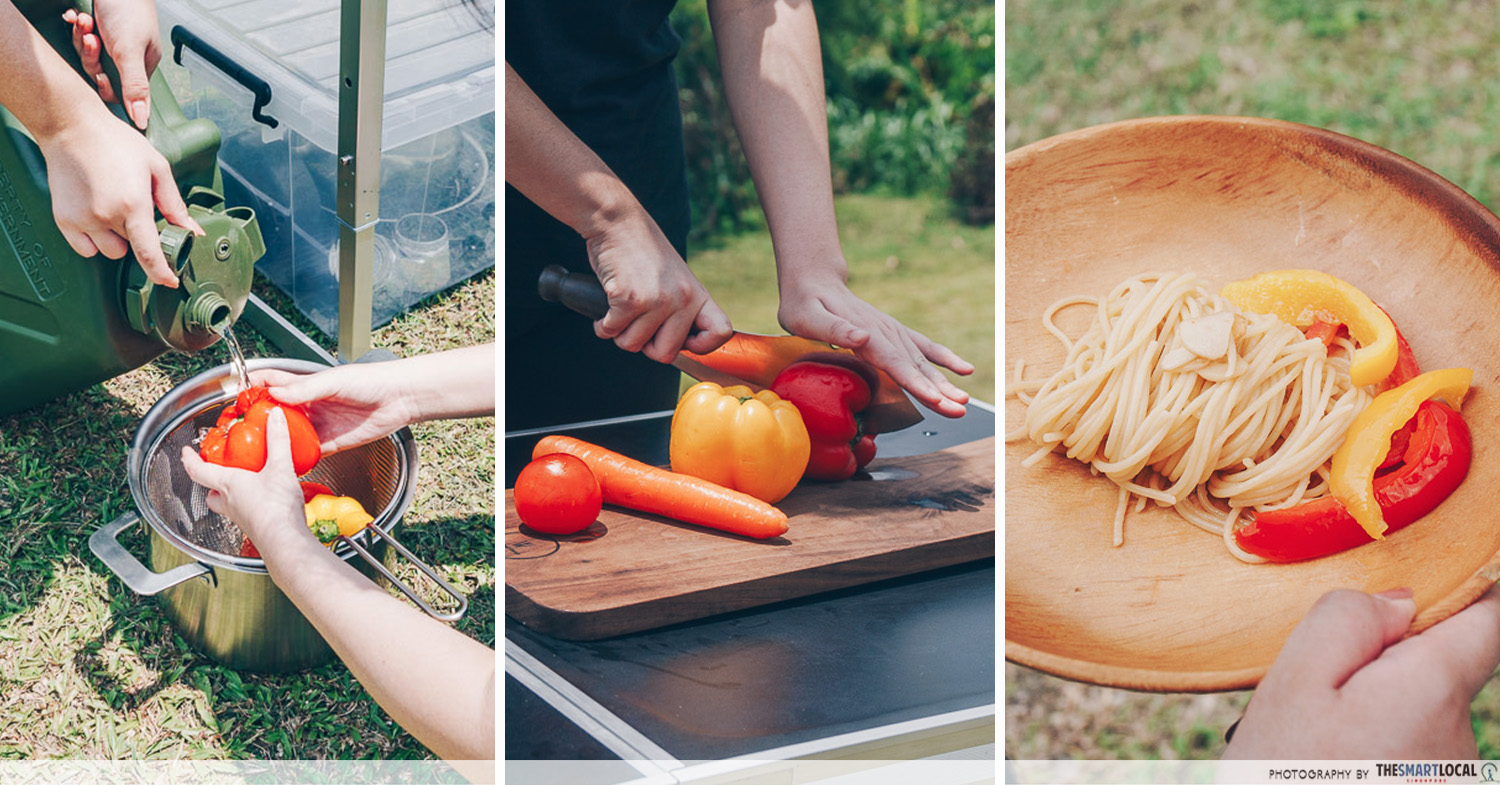
L-R: Washing the veggies using only a jerry can, a sieve and a pot, prepping our ingredients, the final product: a scrumptious Aglio Olio with bell peppers.
Cooking on top of a hill in the middle of the day in the blistering heat was truly a test of our resilience and put a whole different meaning to working for our food. Our experience cooking in the open was similar to how some Mongolian nomads cook, though they experience harsh cold temperatures, while we battled the sun.
In contrast, we probably had it easier since we had portable gas stoves to work with, while the nomads usually have to start an actual fire with wood to do their cooking.
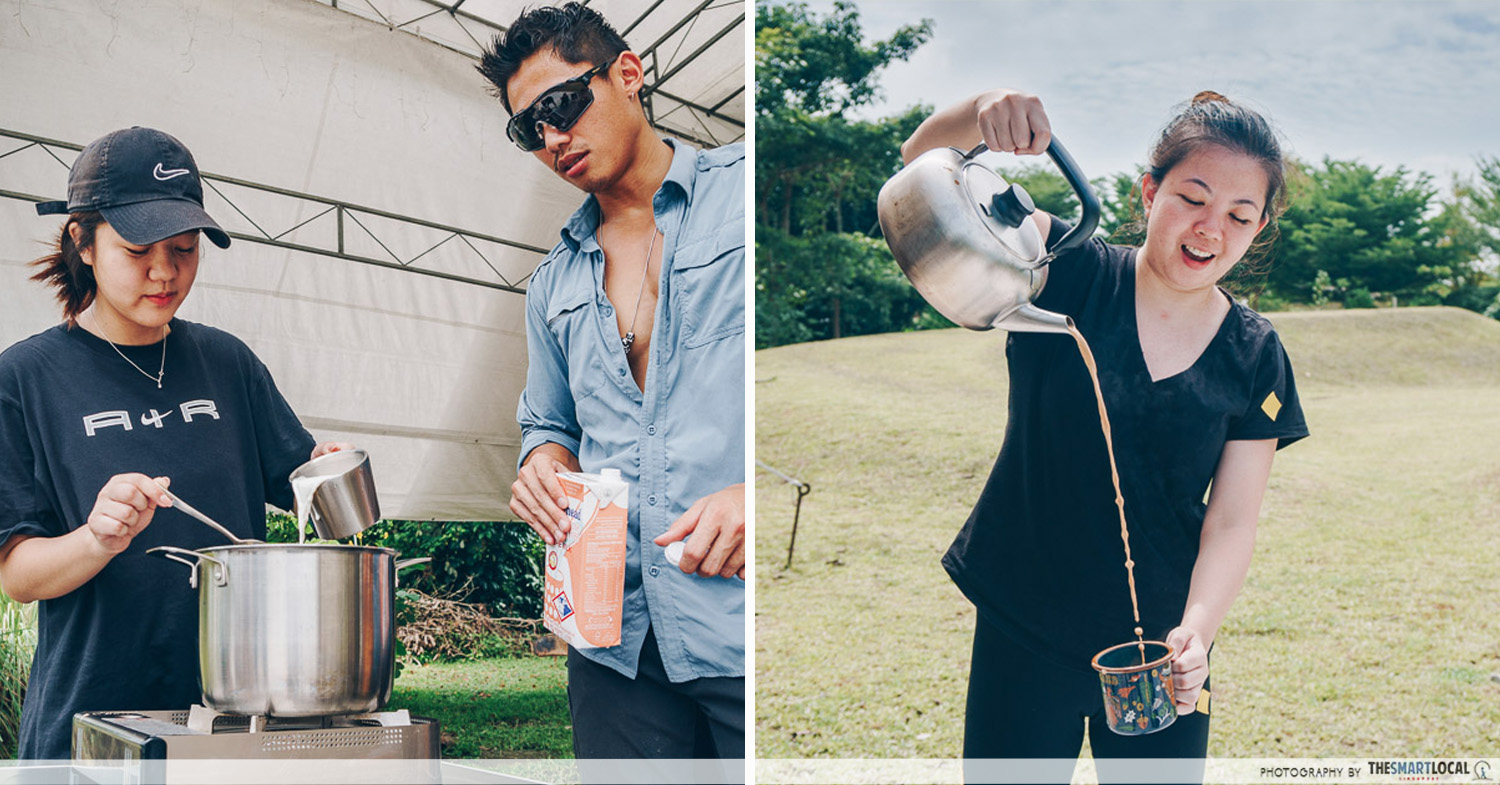
Masala chai making
After having a hearty lunch, it was time for our next activity – coffee and masala chai making. Having only drank chai once, I wasn’t too keen on trying masala chai because of its heavy spices and strong ginger flavours, which just wasn’t my cup of tea – yes, pun intended.
Despite my reservations, Scott urged us to try BE’s own homegrown brand, Humanitea. The tea blends were developed by Scott and his partner Kavita, based on her mother’s recipe. The tea brand is also a social cause, where a dollar is donated to underprivileged families each time a pack is bought.
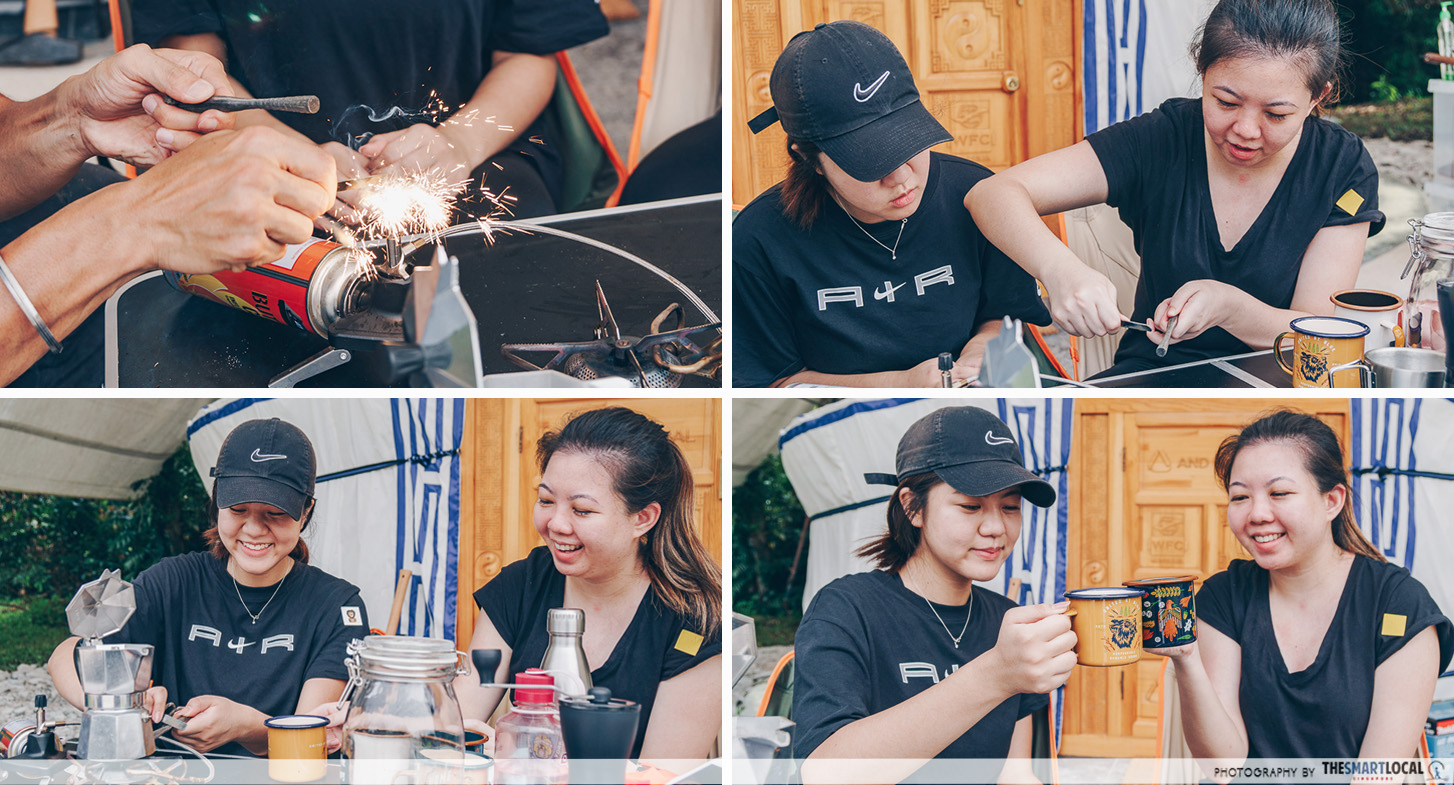
We had our hand at making our own coffee using a moka pot and a quick crash course in using a fire steel to spark up the gas burner, an important skill we would need later on
After enjoying the fruits of our labour, it was time to put our strength and arm muscles to test.
While BE also has a separate bushcraft and woodcraft workshop for those who are looking for a more survival skills focused experience, we were only introduced to the basics of working with saws and axes on wood.
In order to have a more authentic Mongolian experience, we learnt how to break down logs into batons – an essential practice for Mongolians to get their firewood.
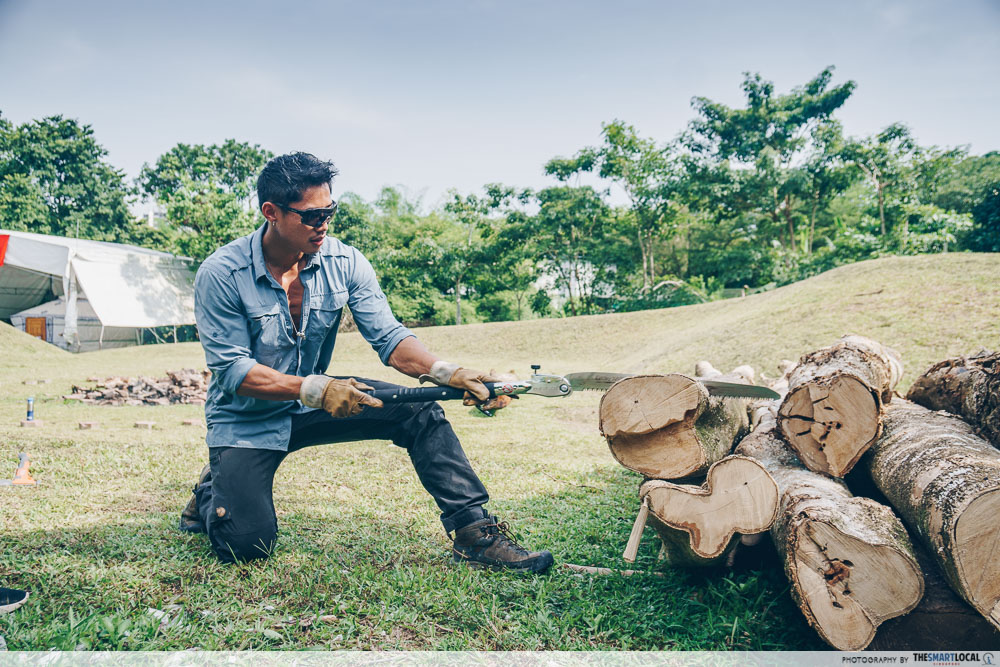
Although it seemed effortless when Scott demonstrated sawing and chopping through the thick logs, it actually requires a whole lot of arm strength to get the job done.
“Thank goodness we never need firewood here” and “I should really start going to the gym” were the two thoughts that constantly popped into my mind while constantly sawing at the trunk to no avail.
After nearly an hour of sawing and a combined effort from Rae, our photographer Tasha, videographer Doreen, and I, we finally managed to saw off a single piece of wood.
But all that blood, sweat and tears for a single chunk didn’t seem like it was worth all that effort. Especially since that one piece could only be turned into eight batons – enough wood to only sustain a fire for an hour.
It was hard to imagine what it would be like if we were actually in Mongolia. We would have to spend the whole day sawing and chopping wood with no rest in between, just to keep ourselves warm through the night. Needless to say, I’ve a newfound admiration for those who do this on the daily.
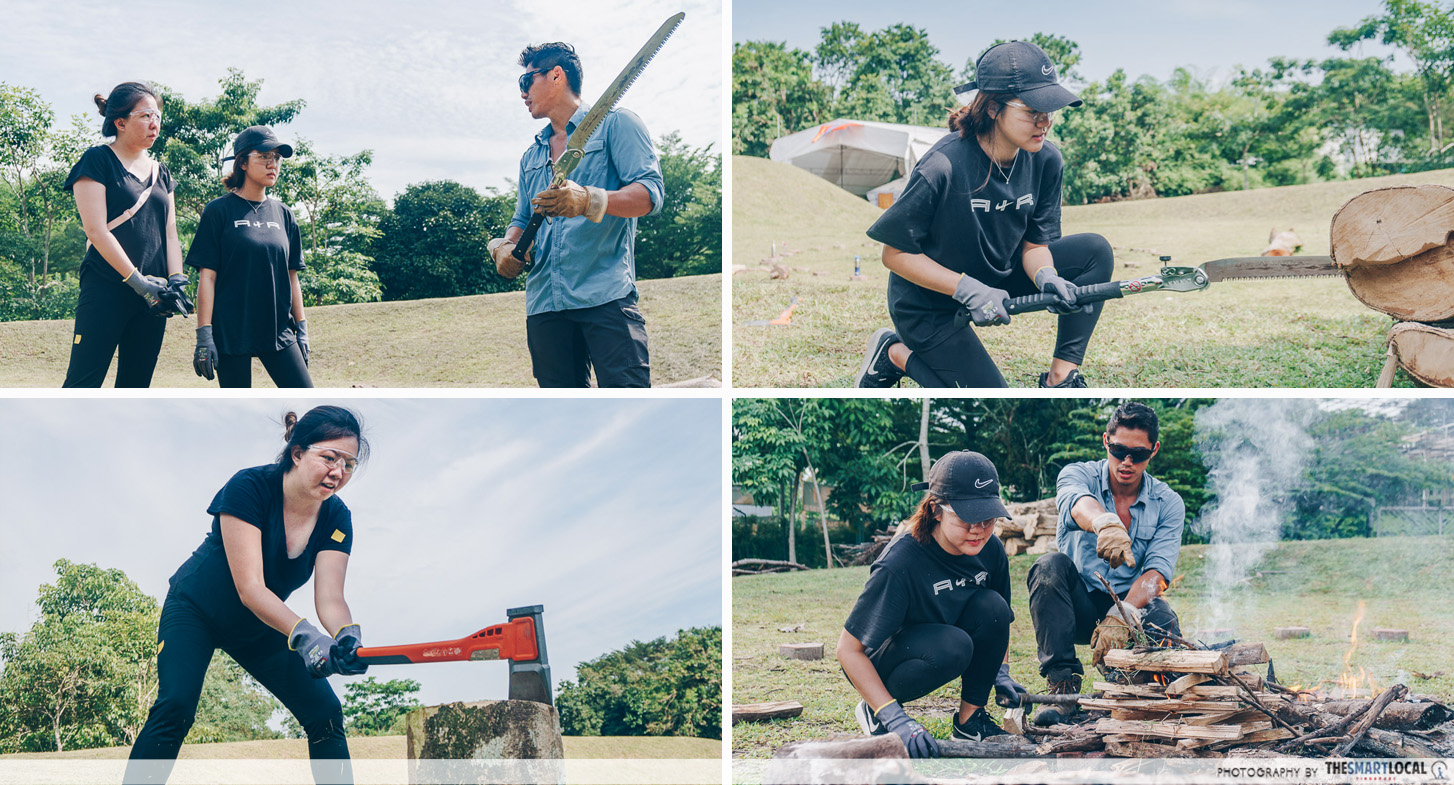
Amidst chopping and sawing, we also had a quick crash course on fire making in preparation for a challenge at night.
The crash course enhanced the pseudo experience of being in the Gobi Desert. At the very least, it gave us a little peek into what nomadic Mongolians go through every day to survive. Although they use chainsaws now, firewood is absolutely essential for cooking and keeping warm in way below negative temperatures.
3. Nighttime activities: ice bucket challenge & movie night
Ice. Bucket. Challenge. – The three words Rae and I have been dreading the whole day have finally come.
The Ice Bucket Challenge we got isn’t a part of the usual itinerary but we wanted to experience something different apart from bushcraft skills. If you’re up for it, just hit Scott and the BE team up and they’d be happy to add it into your stay for you.
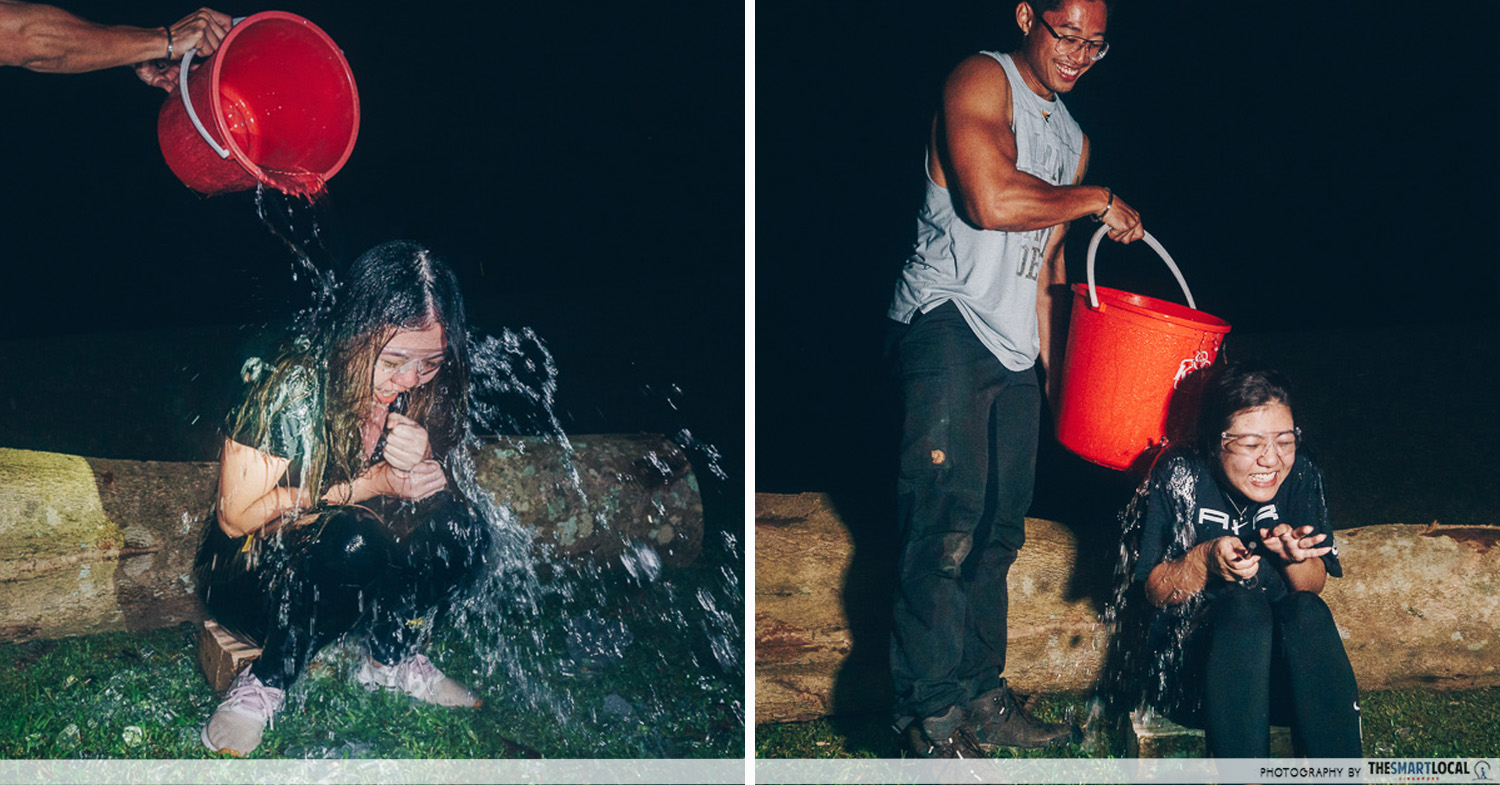
In an attempt to recreate the hypothermia-inducing environment of Mongolia, Scott doused us both in buckets full of icy cold water. We then had to put our fire making knowledge to the test to keep warm.
Without warning and the least bit of hesitation, Scott raised the stakes even higher. If we failed, we were both going to have to sleep out in the open at night instead of the comfy beds in the Mongolian yurt we were looking forward to. Curses filled our heads but we knew that we had to die die make the fire or risk having creepy crawlies as bedtime pals.
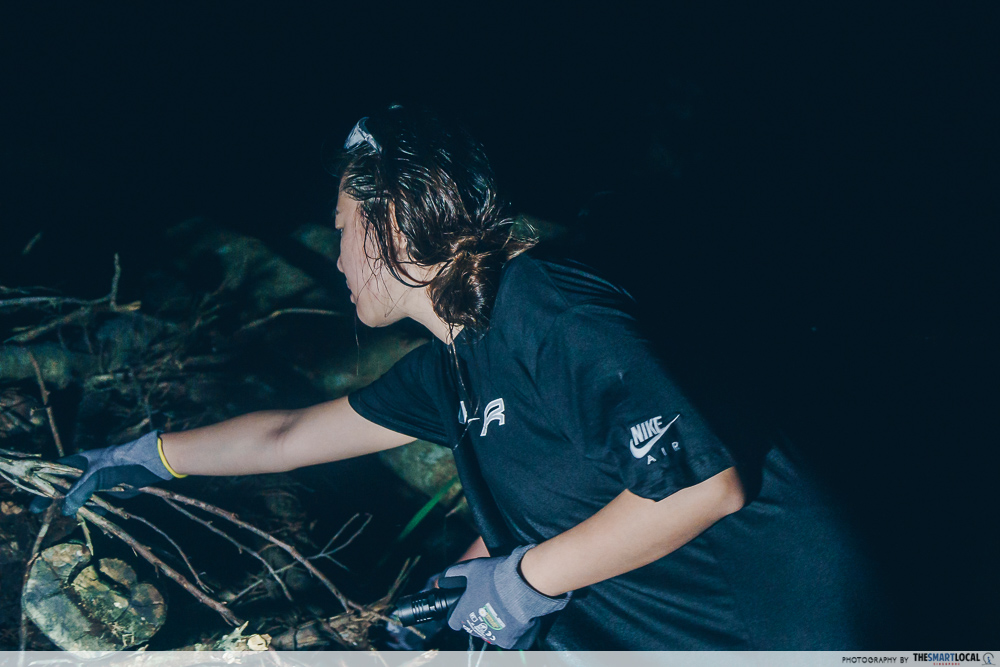
Dripping wet, we navigated through the dark with just a single torchlight guiding our way. Our first order of business was to gather as much dry grass and twigs as we could to use as tinder for our fire.
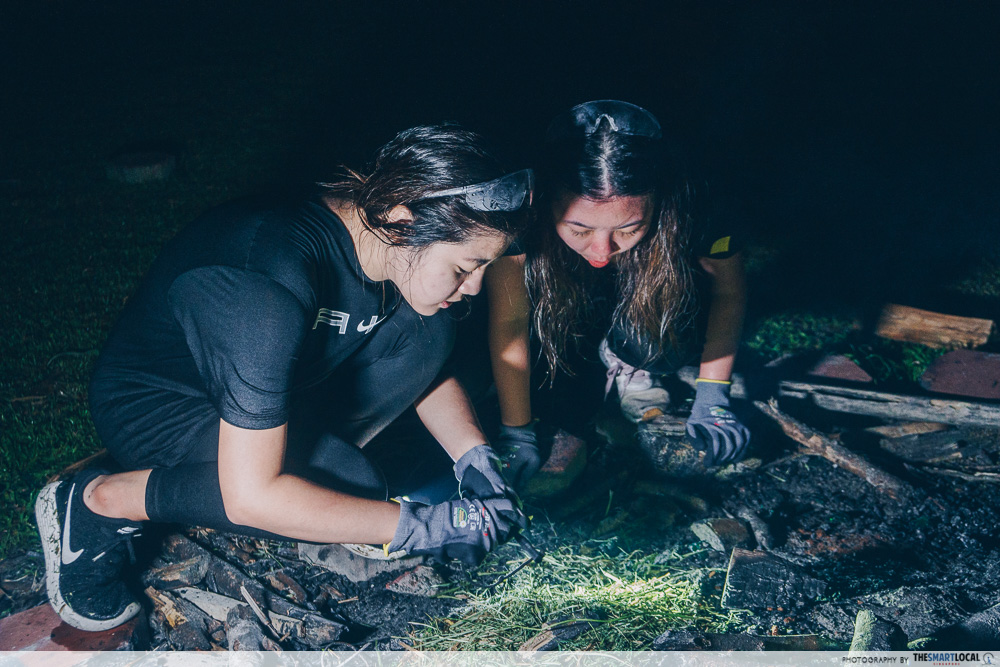
Not pictured: The lighter we attempted to use to create a fire
After many tries of trying to ignite the tinder with the fire steel, including a failed attempt at cheating with a lighter (proving that cheating doesn’t get you anywhere), we finally saw progress in the form of a glowing ember. We quickly took turns blowing at the tiny flame to incorporate oxygen, in order to get the fire growing.
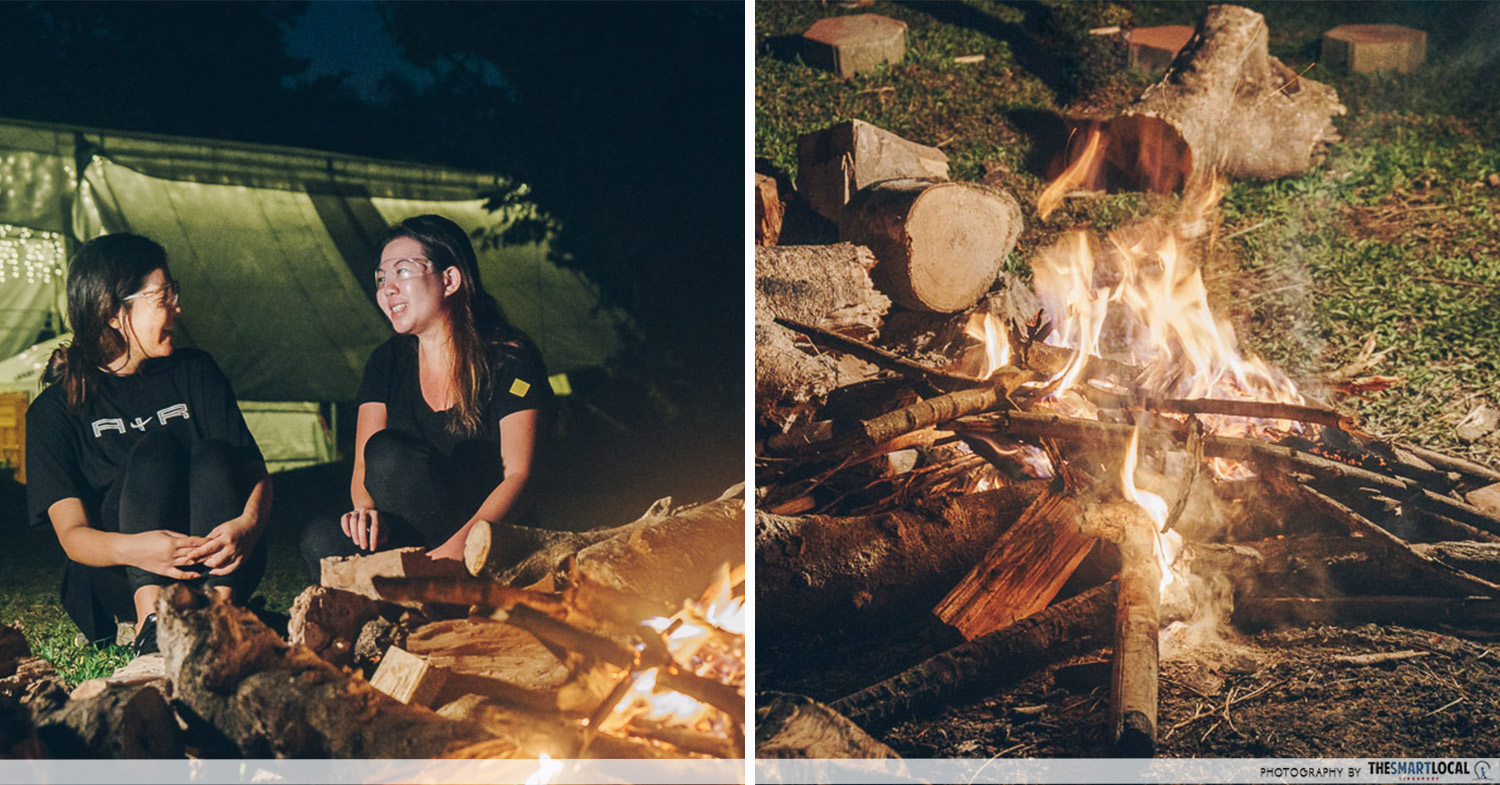
“Aiya we should have gotten marshmallows.”
To stoke the fire even more, we threw in the logs we had spent all afternoon chopping up. Pretty soon, we had a decent campfire going, and Rae and I could finally warm ourselves up.
Although our fire wasn’t big enough nor did it last long sufficiently to dry our clothes, we were at least pleased with ourselves that we passed the challenge. That meant being able to spend the night in a comfy bed in air-conditioned comfort away from the mosquitoes. Bliss.
4. About the experience
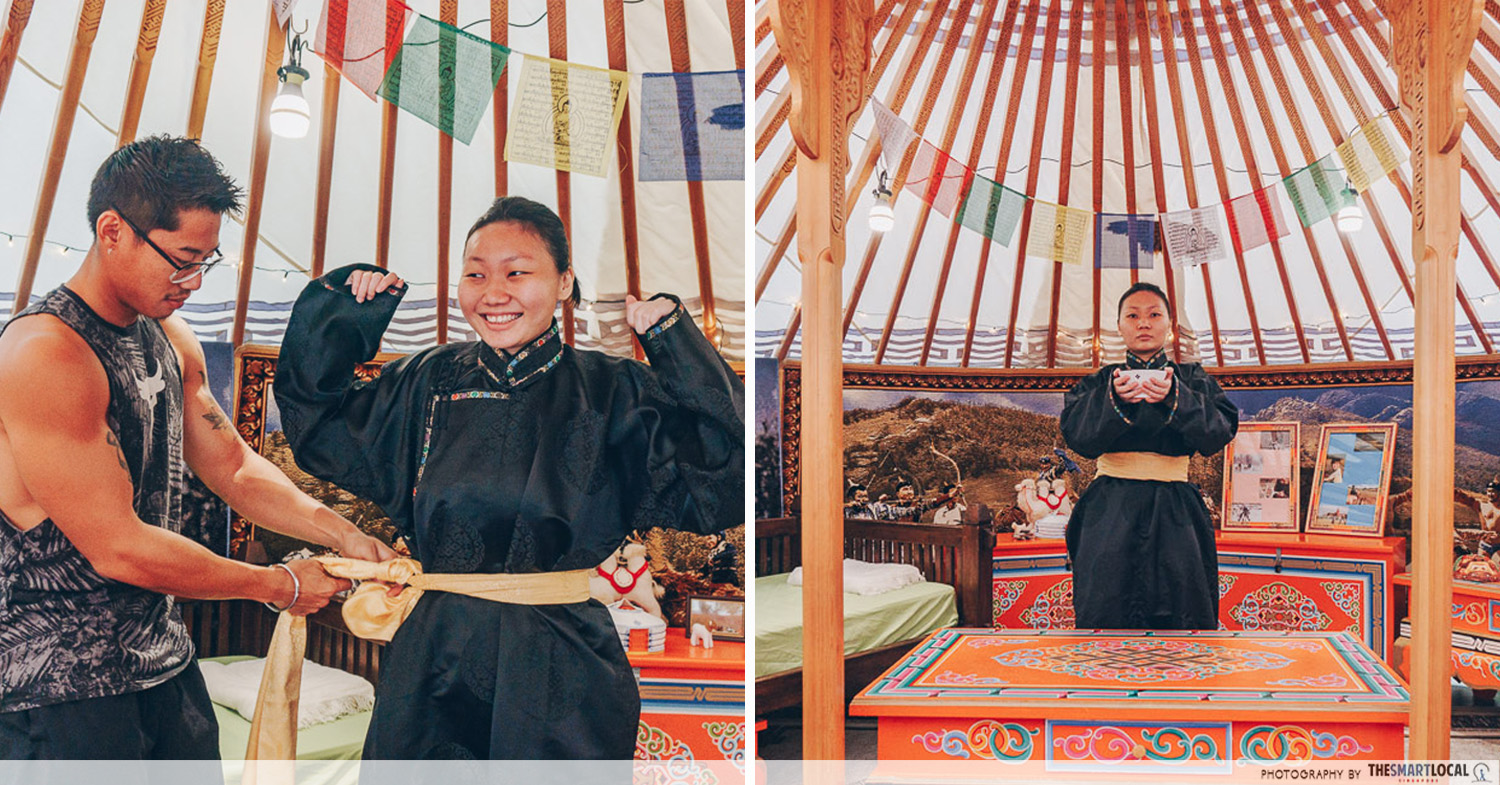
Dress up in the traditional deel costume and have fun posing around the yurt
While we weren’t so ready yet to give up sleeping in air-conditioned comfort, sleeping under the stars is definitely an option if you wanna go all out. Bring your own sleeping bags, yoga mats or even inflatable mattresses if you’re feeling adventurous enough to sleep outdoors, under a tent of course.
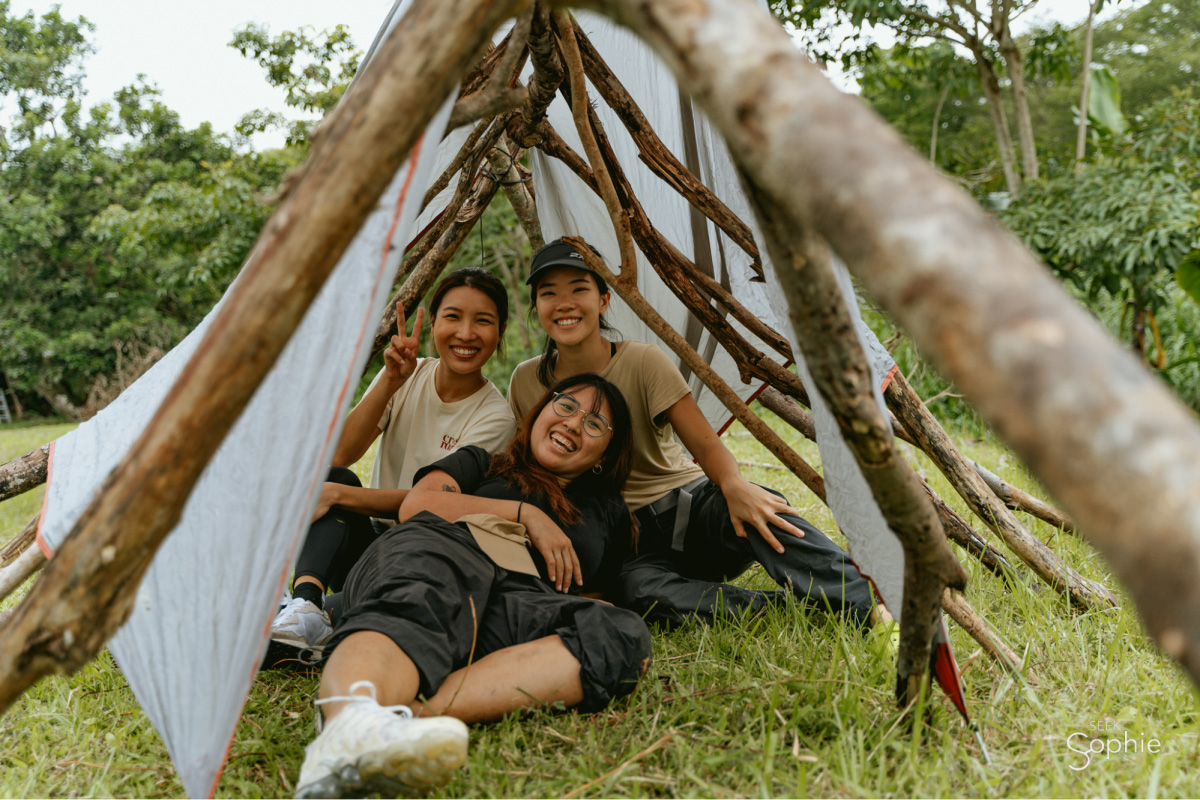
Image credit: Seek Sophie
The entire experience is also pet-friendly, so you can bring your furry ones along for the stay if you like. The campsite is set on a vast open field perfect for running around.
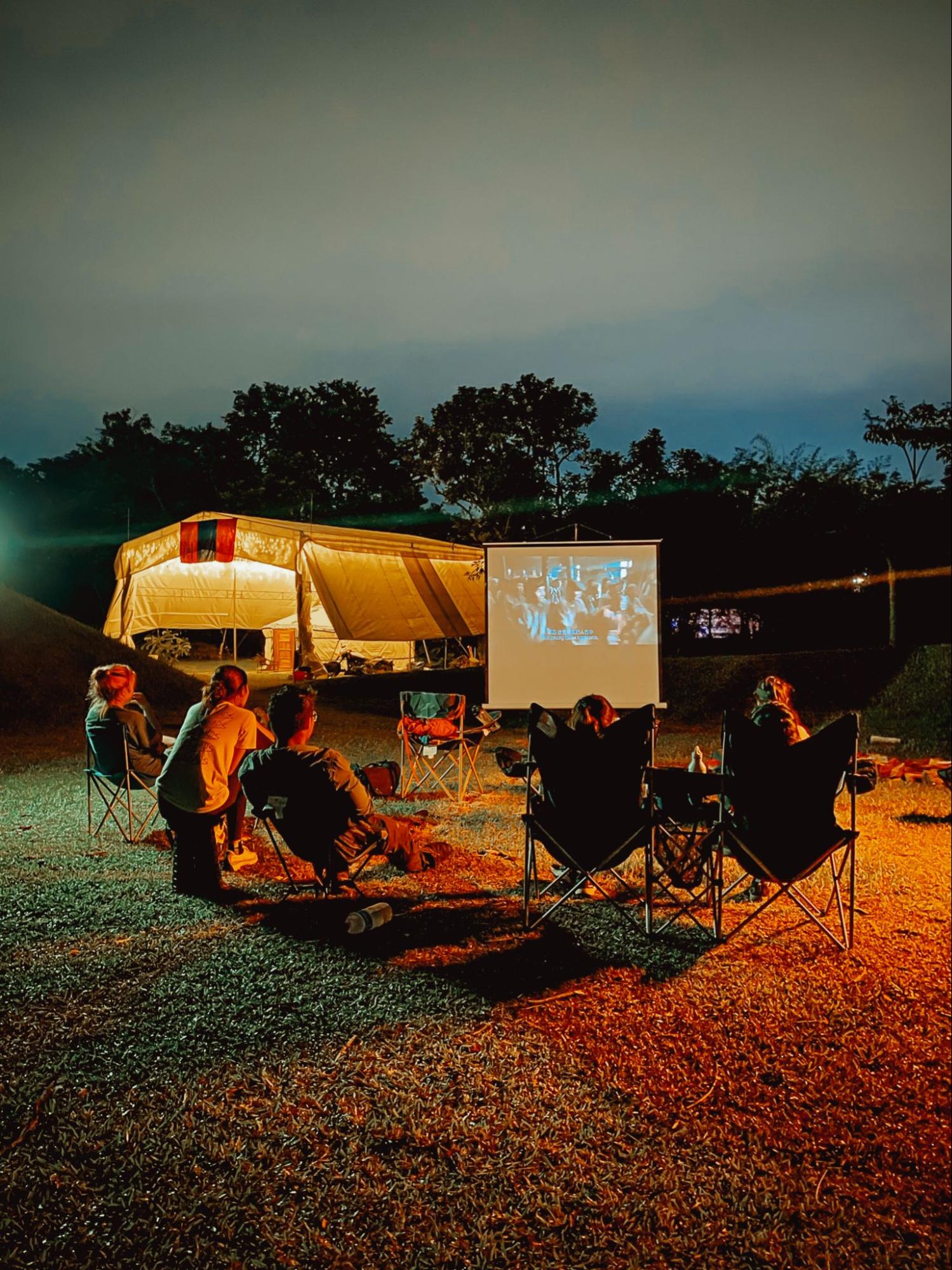
Image credit: Beyond Expeditions SG
When night falls, you can also opt to watch a movie under the stars. On the playlist are classic Mongolian movies for a glimpse into local life while enjoying local Mongolian vodka.
For families with children of the PG13 category, the guides can also put on kid-friendly movies of your choice to cater to them.
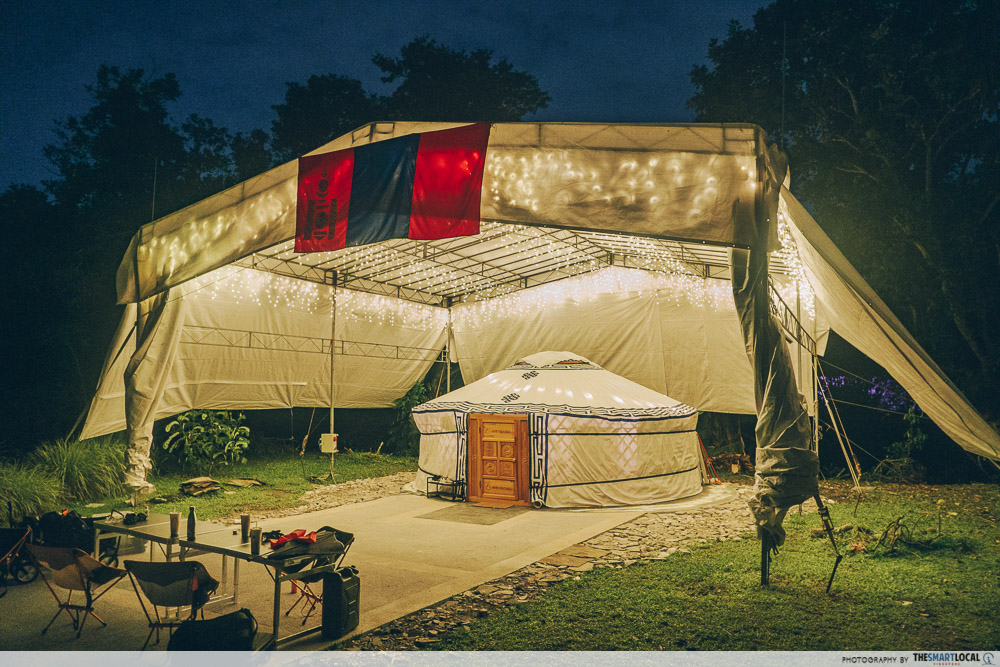
If sleeping outdoors isn’t for you, you can still sleep under the “stars” in the form of fairy lights hanging over the yurt.
The entire itinerary of the stay is flexible and depending on how adventurous you are, the BE team can plan activities suited for you.
Experiencing a piece of Mongolia
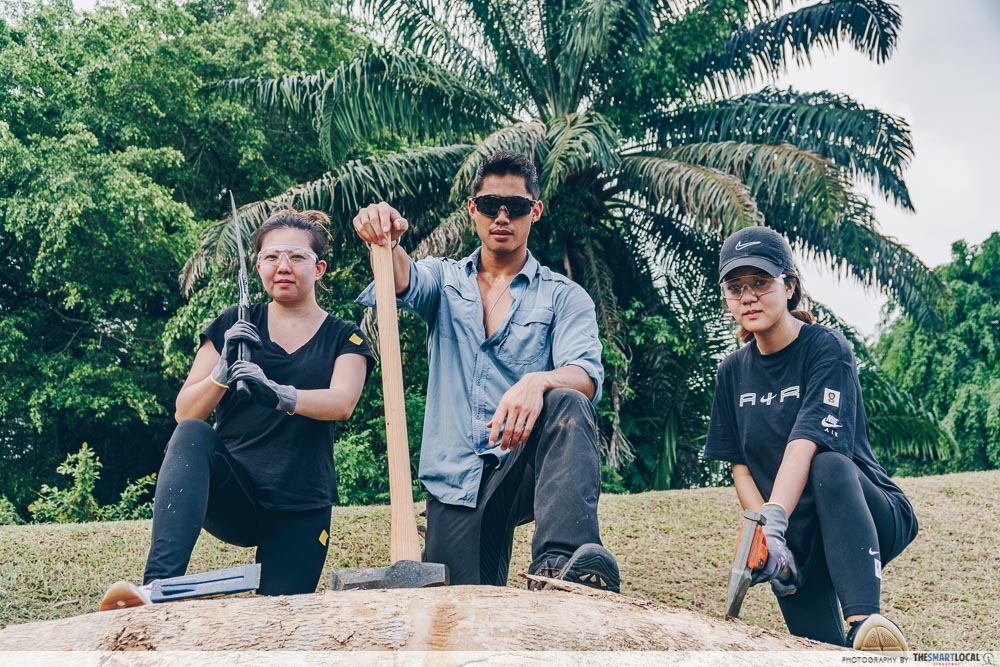
Despite the muscle aches I felt the next morning from having worked muscles I never knew existed, and the medley of sandfly and mosquito bites all over my body, I would definitely agree to go on this little trip again if I could.
Although the humidity of Singapore obviously doesn’t mirror the conditions of Mongolia itself, sleeping in the yurt did add some authenticity to the entire experience.
The stay gave me a taste of what travelling to Mongolia might be, and I can’t wait to try out the real thing once borders are open. And although Scott mentioned that modern day Mongolians had access to modern tools like chainsaws, I really valued the element of wildlife skills. Who knows, I might get lost on one of Singapore’s many islands one day and will need to survive somehow.
Here are some final words from Rae and I from our 2D1N Mongolian yurt stay:
Rae: 7/10 – It’s a once-in-a-lifetime experience because I’ll only ever do this once in my lifetime.
Priscilla: 8/10 – I really enjoyed the experience, especially sleeping in the yurt and I guess this is the closest we’ll ever get to Mongolia for now.
Other outdoor activities to try out:
Photography by Tasha Sun.
Cover image credit: Beyond Expeditions SG
